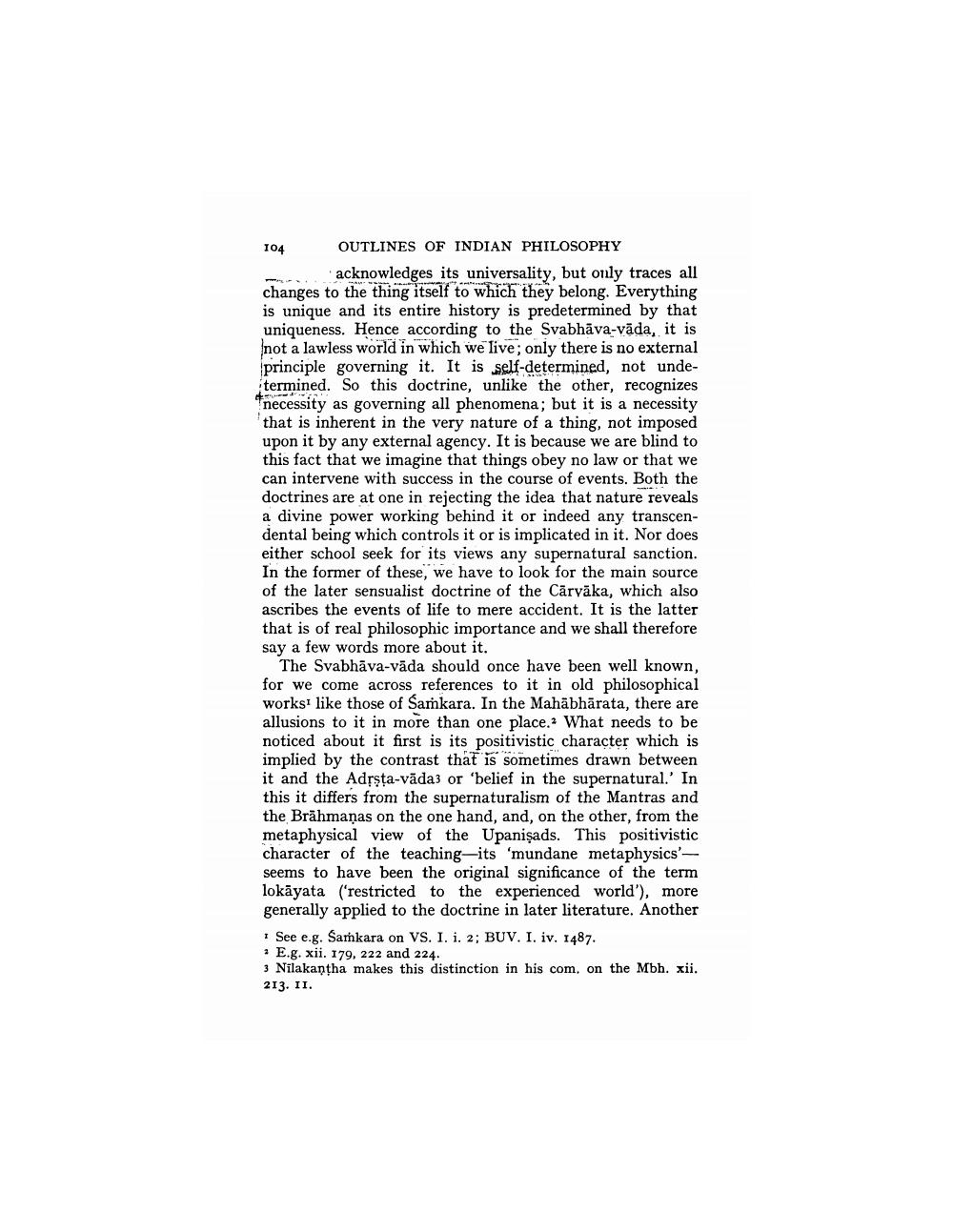________________
104 OUTLINES OF INDIAN PHILOSOPHY
acknowledges its universality, but only traces all changes to the thing itself to which they belong. Everything is unique and its entire history is predetermined by that uniqueness. Hence according to the Svabhāva-vāda, it is Inot a lawless world in which we live, only there is no external principle governing it. It is self-determined, not undetermined. So this doctrine, unlike the other, recognizes necessity as governing all phenomena; but it is a necessity that is inherent in the very nature of a thing, not imposed upon it by any external agency. It is because we are blind to this fact that we imagine that things obey no law or that we can intervene with success in the course of events. Both the doctrines are at one in rejecting the idea that nature reveals a divine power working behind it or indeed any transcendental being which controls it or is implicated in it. Nor does either school seek for its views any supernatural sanction. In the former of these, we have to look for the main source of the later sensualist doctrine of the Cārvāka, which also ascribes the events of life to mere accident. It is the latter that is of real philosophic importance and we shall therefore say a few words more about it.
The Svabhāva-vāda should once have been well known, for we come across references to it in old philosophical works like those of Samkara. In the Mahābhārata, there are allusions to it in more than one place. What needs to be noticed about it first is its positivistic character which is implied by the contrast that is sometimes drawn between it and the Adrsta-vāda3 or 'belief in the supernatural.' In this it differs from the supernaturalism of the Mantras and the Brāhmanas on the one hand, and, on the other, from the metaphysical view of the Upanişads. This positivistic character of the teaching-its 'mundane metaphysics'seems to have been the original significance of the term lokāyata (restricted to the experienced world'), more generally applied to the doctrine in later literature. Another
See e.g. Sankara on Vs. I. i. 2; BUV. I. iv. 1487. · E.g. xii. 179, 222 and 224. 3 Nilakantha makes this distinction in his com, on the Mbh. xii. 213. 11.




